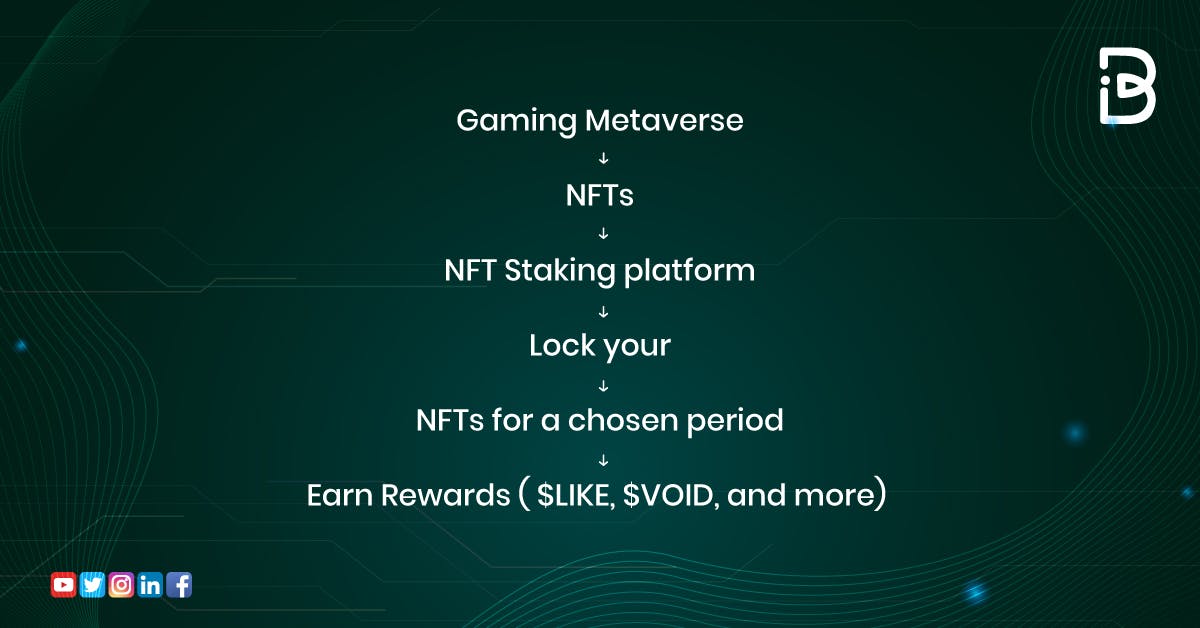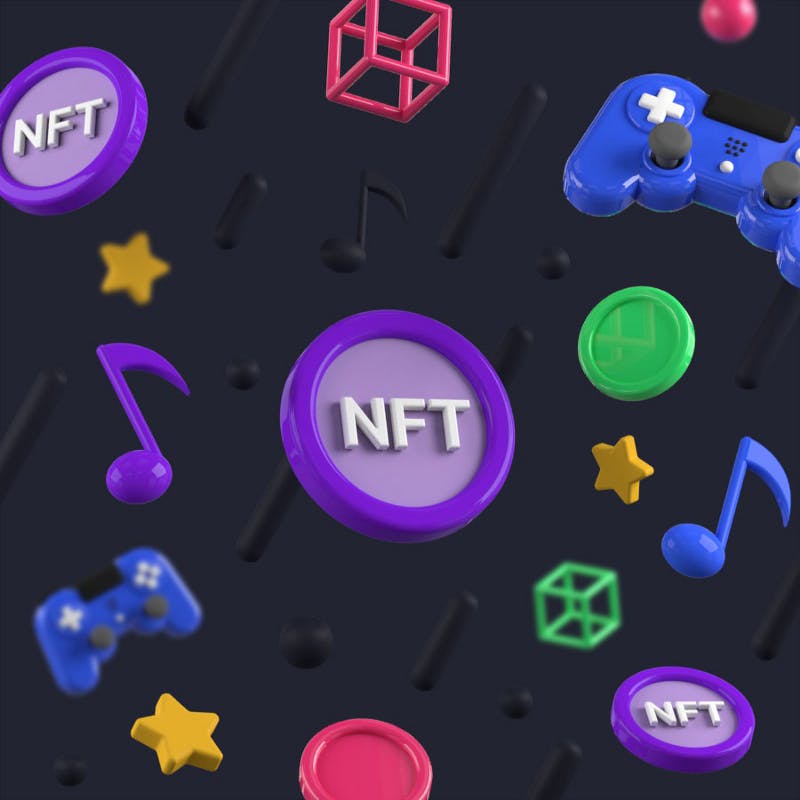NFT Staking: What is it and How it works?
 Looking for newer ways to earn a little extra for your pockets while sleeping, you are at the right stop then.
NFT staking provides one such opportunity for NFT users to make an extra passive income without losing ownership of their NFT collectibles.
NFTs discussion has been a roll for some time now, especially after Jack Dorsey( the founder of Twitter), sold an NFT for one of its tweets for $2.9mn. Also, do you remember that Charlie Bit Me video with 800mn views on youtube? Its NFT was sold for £500,000.
Over time, as the NFT market grows developers, investors, and artists look for new use cases for their Nonfungible token collection. One such utility that is capturing the attention of NFT enthusiasts is NFT staking.
But…..
Looking for newer ways to earn a little extra for your pockets while sleeping, you are at the right stop then.
NFT staking provides one such opportunity for NFT users to make an extra passive income without losing ownership of their NFT collectibles.
NFTs discussion has been a roll for some time now, especially after Jack Dorsey( the founder of Twitter), sold an NFT for one of its tweets for $2.9mn. Also, do you remember that Charlie Bit Me video with 800mn views on youtube? Its NFT was sold for £500,000.
Over time, as the NFT market grows developers, investors, and artists look for new use cases for their Nonfungible token collection. One such utility that is capturing the attention of NFT enthusiasts is NFT staking.
But…..
- What is NFT staking?
- How does it work?
- How can I earn passive income from NFT staking?
- What are various platforms for NFT staking? In this blog, we will address most of your queries regarding NFT staking along with ways and platforms you can choose to stake your digital assets. So, Let's Get started!
What is NFT Staking?
It refers to locking your digital assets in a decentralized finance platform. In effect, it fetches rewards to the NFT holders based on three major criteria including Annual percentage yield, staking period, and the number of NFTs kept at stake. This is called the staking reward that you can earn while still being the owner of your digital assets. Earning cryptos by staking NFTs you have at hand. This can be beneficial to the investors as it can take up the price of the existing NFT assets. As, it reduces the supply of NFTs for trade, creating a deflationary supply pressure. For staking an NFT, all that is needed is a cryptocurrency wallet compatible with NFTs in use. Although not all NFTs can be staked, it depends on the project type. There are various staking platforms that we are going to discuss later in this article. Staking NFT is similar to Defi Yield Farming, which allows you to make more cryptos by using your cryptos. It allows yield farmers to rotate their cryptos around the marketplace for maximizing their returns.
How does NFT staking work?
In a way, staking NFTs works similarly to staking cryptocurrencies. All nonfungible tokens cannot be staked. On the account of being tokenized assets, they can be deployed on an appropriate staking platform via smart contract on an appropriate blockchain platform. As was mentioned before, for staking NFTs, you need a crypto wallet compatible with the token in question. Afterward, you need to connect your wallet to the chosen NFT staking platform, adding the desired asset to your staking pool. Now, all that is left is to wait for your staking rewards, which depend on the type of staking platforms, period of staking, and annual percentage yield. Also, staking relies on the Proof of stake consensus mechanism for rewarding participants. Most platforms offer periodic rewards, which usually come in the form of the platform's utility token. Also, some platforms have DAOs, where NFT holders can store their assets in a DAO pool or NFT staking pool. In fact, sometimes it allows the users to participate in the DAO's governance tasks.
How to earn passive income from NFT Staking?
You can earn passive income by staking nonfungible tokens on a compatible staking platform. This can be valuable, especially for long-term NFT holders or HODLers, which is a usual case with NFT collectors. They can lock their NFT collections for earning passive income, instead of holding them in a crypto wallet. A large portion of NFTs belongs to the gaming metaverse of the Web 3.0 Universe. With a number of staking opportunities in the play-to-earn games, one can lock their NFTs in various blockchain games including Axie Infinity, The Sandbox, MOBOX, and Zookeeper among others. Earlier, on a metaverse gaming platform, you can use your NFTs to just buy an asset that is integral to that game. This leads to the limited utility of a digital asset to a crypto gaming metaverse. Now, with staking this issue can be resolved in the following manner.

What are various NFT Staking Platforms?
 These are spaces where NFT holder can stake their digital assets to earn passive income. Usually, play-to-earn gaming platforms are popular among users as they have a large pool of NFTs to their name.
Reference: mobox.io/community/article/614c37918b39389a..
Following are some of the top NFT Staking platforms:
These are spaces where NFT holder can stake their digital assets to earn passive income. Usually, play-to-earn gaming platforms are popular among users as they have a large pool of NFTs to their name.
Reference: mobox.io/community/article/614c37918b39389a..
Following are some of the top NFT Staking platforms:
- Onessus
A play-to-earn staking system that rewards users in token $VOID. The staking system of Onessus is called " When Staking". Here, NFTs have to be staked with a $VOID token as there will be no reward otherwise. Advantages It has an in-build learning mechanism that allows the lease of NFTs to gamers. Incentivize stakers with longer staking duration
- MOBOX
A play-to-earn gaming Metaverse, that allows integration of Defi yield farming and NFTs. It is built on the Binance smart chain and allows users to earn rewards in its native cryptocurrency MBOX. Advantages It permits stakers to participate in the governance mechanism through the governance token MBOX. The more NFTs you collect, the more rewards you can get.
- Only1
A one its kind, of social media platform powered by NFTs and is built on the Solana blockchain network. It is specifically beneficial for the NFT creators who can generate income through the creator staking pool. Advantages A structure incentivizing users for their time and effort, without requiring them to pay any third party for their content promotion. Content generators are rewarded in their native token $LIKE
- KIRA
Firstly, the user has to transfer their digital asset to the KIRA network from their Defi wallet. Afterward, an acceptance request is sent, which upon approval assigns a corresponding interest. The staking reward here depends on the governance rules by the KIRA network that varies according to the liquidity supplied. Advantages Allows re-funging of assets, which can be used for purposes like trading, investment, etc. Multilayered security, with the absence of staking limit Compatible with Ethereum, Binance Smart chain, Polkadot, and Cosmos blockchain protocol.
Concluding Remarks
NFT staking is an ideal avenue for NFT HODLers to utilize their digital assets for earning extra income without losing their ownership. Before staking NFTs it is best to have an idea of what you can get through it. Therefore, good market research along with testnet usage is imperative to have a clear idea of staking. Stay tuned with ImmuneBytes, to be in the known with more such information about NFT, Metaverse, and Web3 Universe.
About ImmuneBytes
ImmuneBytes, a blockchain security company offers enterprises and startups comprehensive smart contract auditing solutions for their applications to have a secure commencement. Our journey begins with an aim to foster security in the upcoming blockchain world, improving the performance of large-scale systems.
However, Blockchain fosters a secure transactional environment, and applications built on this technology come with their own set of vulnerabilities. As there is no scope for alterations in blockchain transactions, smart contracts need to be thoroughly evaluated to prevent any further loopholes from turning your project into an extravagant exploit. ImmuneBytes administers stern smart contract audits, employing both static and dynamic analysis, alongside examining a contract's code and gas optimization, leaving no escape route for bugs.